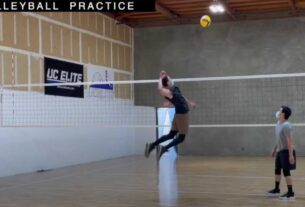Softball, often considered a variant of baseball, is a sport played by millions of people around the world. It features a smaller playing field and a larger ball, which makes it more accessible for players of all ages and skill levels. In softball, teams attempt to score runs by hitting the ball and advancing around the bases. The objective is to outscore the opposing team within a specified number of innings.
What is a Run Rule in Softball?
A run rule, also known as a mercy rule or slaughter rule, is a regulation in softball that allows for the early termination of a game when a team achieves a substantial lead over their opponents. When a run rule is in effect, the game ends before all scheduled innings are completed if a certain point differential is reached.
The Purpose of Run Rules
Run rules serve several purposes in softball. Firstly, they help to prevent unnecessary prolongation of a game that has already been decided. If one team has built a significant lead, it becomes highly unlikely for the trailing team to make a comeback. Ending the game early in such cases saves time and resources for both teams and allows them to move on to the next game more efficiently.
Secondly, run rules can contribute to the overall safety and well-being of players. Softball is a physically demanding sport, and prolonged games can increase the risk of injuries, fatigue, and overexertion. By implementing run rules, the governing bodies of the sport prioritize the players’ health and ensure a fair and competitive environment.
Run Rule Scenarios
The application of run rules may vary depending on the level of play and the specific softball organization. Different leagues and tournaments may have their own set of run rule guidelines. Let’s take a closer look at some common run rule scenarios that are often encountered in softball:
The 10-Run Rule
One of the most prevalent run rules in softball is the 10-run rule. According to this rule, if a team establishes a lead of 10 or more runs after a specified number of innings, the game is considered complete, and the team with the lead is declared the winner. The exact number of innings required to activate the 10-run rule may differ depending on the league or tournament.
For example, in a youth softball league, the 10-run rule might come into effect after the completion of five innings. If Team A is leading Team B by 10 or more runs at the end of the fifth inning, the game ends, and Team A secures the victory.
The 15-Run Rule
In some leagues or tournaments, a more substantial run rule known as the 15-run rule may be implemented. Similar to the 10-run rule, the 15-run rule dictates that if a team establishes a lead of 15 or more runs after a specified number of innings, the game is terminated, and the leading team is declared the winner.
The 15-run rule is typically encountered in higher-level softball competitions, where the disparity in skill between teams may be more pronounced. By allowing for the early termination of games with a significant point differential, the 15-run rule ensures a fair and efficient progression of the tournament.
Frequently Asked Questions (FAQs)
Now, let’s address some frequently asked questions regarding run rules in softball:
Can a game end in a tie due to the run rule?
No, a game cannot end in a tie due to the run rule. The run rule is specifically designed to determine a winner when there is a significant point differential between the teams. If the run rule is activated and the game ends prematurely, the team with the lead at that point is declared the winner.
Do run rules apply to all levels of softball?
Run rules may vary depending on the level of play and the governing softball organization. While most leagues and tournaments have some form of run rule in place, the specifics can differ. It is essential to familiarize yourself with the specific run rule guidelines of the league or tournament you are participating in.
Can a team request to continue playing even if the run rule is activated?
In most cases, once the run rule is activated, the game is considered complete, and the result is finalized. Teams usually do not have the option to request to continue playing beyond the point of activation. The purpose of the run rule is to ensure an efficient and fair resolution of games with significant score differentials.
What happens if the run rule is activated in the middle of an inning?
If the run rule is activated in the middle of an inning, the game will end once the current inning is completed. For example, if the 10-run rule is in effect, and Team A achieves a 10-run lead over Team B in the middle of the seventh inning, the game will conclude at the end of the seventh inning, even though the run rule was activated.
Can run rules be modified or waived?
In some exceptional circumstances, such as playoff games or tournaments with specific rules, the run rule may be modified or waived entirely. The decision to modify or waive the run rule lies with the governing body or tournament organizers. Such exceptions are usually communicated to the participating teams before the start of the event.
How do run rules affect player statistics?
When a game ends prematurely due to the run rule, the statistics of individual players may be affected. For example, if a player had an opportunity to bat but did not get a chance to complete their turn due to the game ending early, that at-bat may not be recorded in their individual statistics.
Conclusion
Understanding the concept of run rules in softball is crucial for both players and spectators. These rules ensure the efficient conclusion of games with significant score disparities and prioritize player safety. By implementing run rules, softball organizations create a fair and competitive environment while saving time and resources.
So, the next time you’re watching a softball game and you hear about the run rule being activated, you’ll know exactly what it means. Whether it’s the 10-run rule or the 15-run rule, these regulations serve a vital purpose in the sport of softball.



